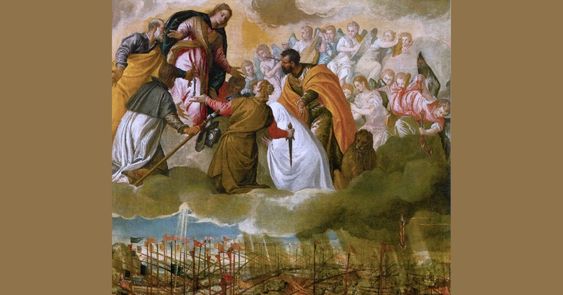
Pope Pius V, a member of the Dominican order, was a fervent defender of the Rosary. He also received a private revelation of the miraculous outcome of the battle and spontaneously gave thanks, even before he had any knowledge of the progress of the operations and the success of the Christian fleet.
The date of October 7 was very symbolic: it was in fact the traditional day of gatherings, prayer and intercessory processions of rosary confraternities.
The Pope was not the only one to consider this victory as miraculous: the Senate of Venice decided to inscribe, below the painting of the battle in the Doge's Palace, the inscription "Nè potenza e armi nè duci, ma la Madonna del Rosario ci ha aiutato a vincere": "It was not the power nor the weapons nor the leaders, but Our Lady of the Rosary who helped us to win."
Pius V decided to institute a feast on October 7, to celebrate in the liturgy the devotion of the Rosary, which was at first named Feast of Our Lady of Victory. Pope Gregory XIII changed its name to the Feast of the Holy Rosary, and later Pope Pius X gave it its present name: Feast of Our Lady of the Rosary. In the current Roman calendar, Our Lady of the Rosary is listed as a memorial on October 7.
This solemn feast, decreed by Pius V and continued by Popes Gregory XIII and Pius X, officially credited the Dominican Order with the propagation and organization of this devotion started in the Middle Ages.
Isabelle Rolland (Source: Marian Encyclopedia of the site mariedenazareth.com)